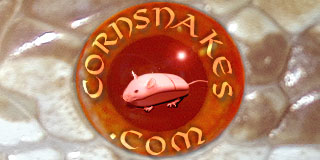From my retired SerpenCo.com website.
Pewter Corn Snake
The genetics that make up this particular cultivar are a combination of Charcoal (type 'B' Anerythrism) and Blood Red. There has been some confusion about this a while back when apparently the combination of type 'A' Anerythrism and Blood Red bore the same label for a short period of time.
<P>Now this is a fairly new cultivar on the scene. As any variety of the Blood Red, they are in perpetual short supply, and consequently high demand. Or visa versa. I don't produce very many of them, and this actually will be the first year I offer them on my price list for sale. I usually would just take the few that I decided to sell to the first couple of herp shows and let the people find those gems among all the others laying on the tables. It was very rare for any to come back home with me from the show, as usually the first hand to lay on the deli cup never let go of it. Maybe one of these days I get smarter and try to produce more of them.
Nearly all of the examples I have came out of my project to combine Blizzard with Blood Red. This certainly seemed like a good idea at the time, but I must confess that all of the Blizzards that have come from this project have been rather disappointing. I thought that adding Blood Red to the Blizzard would produce an even more predictably patternless animal, but the exact reverse seems to be true. And if someone twisted my arm real hard, I would have to admit that the Pewters were the only really interesting thing to come from this entire project. Such is life.
I don't really have an overwhelming number of adults to be able to give an accurate assessment of how much variability the coloration will be in this cultivar. Blood Reds themselves can be quite variable, so adding Charcoal to the mix doesn't seem to help matters much. Some can have a pretty interesting effect by having nearly pure white sides to them, whereas others can just be rather nondescript nearly patternless gunmetal gray snakes. So far I haven't seen any yellow crop up in this cultivar, but I expect it will happen eventually. But for now, there is no need to use color film to get photos of these guys as adults. The juveniles can sometimes have a kind of bluish irridescent sheen to them, but it does not appear to carry over into adulthood. I expect as more of them become available, selective breeding will likely produce some exceedingly interesting looking animals.
